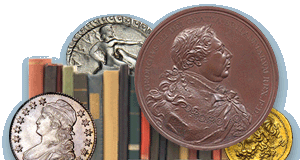|
PREV ARTICLE
NEXT ARTICLE
FULL ISSUE
PREV FULL ISSUE
The E-Sylum: Volume 3, Number 27, July 2, 2000, Article 10BOOK PRESERVATIONNBS Board member Joel Orosz writes: "back in the early 80s, when I was earning a Master's Degree in Museum Studies, we were taught that the ideal relative humidity (RH) at which to store books was 50%, at a temperature of 65-68 degrees F. Maybe the standards have changed since, but I would have grave concerns about storing books at an RH higher than 55% -- anything above that would almost certainly create conditions conducive to the growth of mold and mildew on the book." Darryl Atchison writes: "My question relates to reading old books and catalogues. For example, I recently received a publication published in the mid 1870s, which I would swear has never been opened since the binding is so stiff. Obviously, I purchased this text TO READ. I don't just want to relegate it to some cool, dark and dry bookshelf. This would be akin to storing coins in a bank vault and never being allowed to see them. This is not what I got interested in numismatics for. I would look readers comments and suggestions on care and handling of old (and new) publications, specifically those - such as this instance - which are difficult to read due to the condition of the binding and or pages. Thanks for your help." Mike Jones writes: "I guess this subject is a headache for most book collectors. As for myself, I use simple common sense. ONE: each book/catalog should be protected by placing it in a clear archival sleeve with sensitive closure....this would at least eliminate dust and the rubbings from each other especially taking it out and placing back in the bookshelf ... glass-fitted doors are a must for bookcases TWO: never, ever pull books from shelves by grabbing the head of spine ... sooner or later you will have nice books with tender spines. THREE: never, ever open books flat on a table to read ... either hold in your palms and open at a V angle or place supports at each cover so that they do not open flat. FOUR: I just hate it when I see some good books displayed slanted on bookshelves .... they're gonna buckle sooner rather than later. FIVE: There have been many talks over the years about maintaining proper temperature and humidity for coins and books ... this is quite unrealistic for most of us ... common sense for each region must be used. SIX: simple repairs are a must! ... tears must be closed before they get to be ugly ... if plates had tissue guards originally and are not there, it's best to substitute with some imagination, otherwise the plates and the facing text pages will turn on you ... sometimes it is best to lightly trim edges of brittle untrimmed pages so that they don't get deeper in trouble, though some purists will disagree ...if the original staples holding them booklets together are about to rust or rusted, best take them out and replace them or just lay loose within, as once the rust starts in, nothing can be done to take the spots off. SEVEN: best never to buy books with problems to begin with, as they will cost you in a long run ... scotch-taped pages with browning ... more than minor foxing ... rebound using modern covers ... waterstaining ... etc. I am sure each collector has his tolerance level and you know what that is for yourself..." Wayne Homren, EditorContent presented in The E-Sylum is not necessarily researched or independently fact-checked, and views expressed do not necessarily represent those of the Numismatic Bibliomania Society. This is a static archive page documenting the originally published content. Links were active at the time of publication but may no longer work. Check subsequent issues for corrections and commentary. The Numismatic Bibliomania Society is a non-profit organization promoting numismatic literature. For more information please see our web site at http://www.coinbooks.org/ There is a membership application available on the web site. To join, print the application and return it with your check to the address printed on the application. Visit the Membership page. Those wishing to become new E-Sylum subscribers (or wishing to Unsubscribe) can go to the following web page link. To submit items for publication in The E-Sylum, write to the Editor at this address: E-Sylum Editor Copyright © 1998 - 2024 The Numismatic Bibliomania Society (NBS) |

